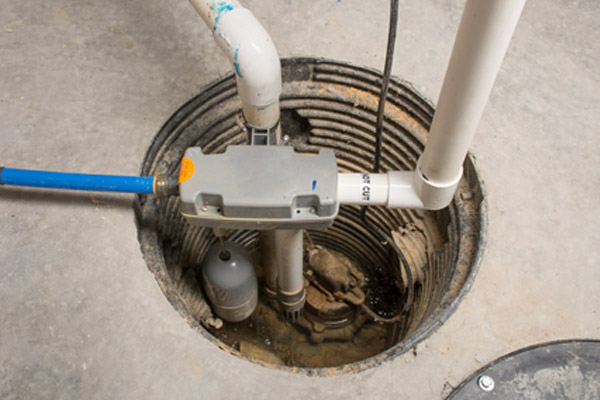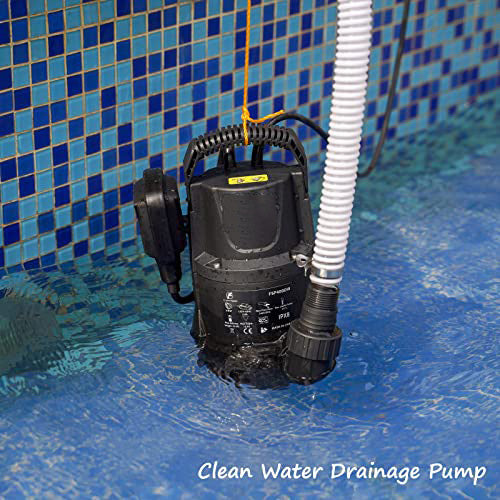Any individual has got their own unique way of thinking in relation to How to Care for Your Sump Pump.

Sump pumps are crucial parts in numerous homes, especially in areas susceptible to flooding or too much wetness. They assist stop water damage by effectively getting rid of excess water from cellars or crawl spaces. However, like any other device, sump pumps require regular maintenance to guarantee they operate properly when needed one of the most. Cleansing your sump pump is a crucial part of its upkeep, and comprehending just how to do it correctly can save you from expensive repair work and potential catastrophes.
Introduction
Maintaining a clean sump pump is important for its appropriate performance and longevity. Ignoring this vital job can cause clogs, malfunctions, and inevitably, water damages to your residential or commercial property. Consequently, discovering exactly how to clean a sump pump is essential for house owners that count on these tools to keep their cellars completely dry and protected.
Indications of a Dirty Sump Pump
Understanding when your sump pump requires cleansing is essential for avoiding prospective breakdowns. Some common indications that suggest a dirty sump pump include weird noises during procedure, reduced water flow, and visible particles in the pit. If you observe any one of these symptoms, it's necessary to clean your sump pump promptly to prevent any further issues.
Getting ready for Cleansing
Prior to you begin cleansing your sump pump, it's necessary to take some safety and security preventative measures. Begin by shutting down the power to the pump to prevent any kind of electrical accidents. In addition, wear proper protective gear, such as handwear covers and safety glasses, to safeguard yourself from dust, debris, and prospective pathogens.
Recognizing the Sump Pump
Prior to diving right into the cleansing procedure, it's essential to have a standard understanding of exactly how a sump pump works. Typically set up in a pit or basin below the basement floor, a sump pump includes numerous essential parts, including a pump, a float button, and a discharge pipe. When water gathers in the pit, the float switch activates the pump, which then pumps the water out through the discharge pipeline, away from the structure's foundation.
Step-by-step Overview to Cleaning Up a Sump Pump
Turning off the Power
Begin by disconnecting the power supply to the sump pump to stop any type of accidents while cleaning.
Looking For Proper Performance
Before re-installing the pump, execute a quick examination to ensure that the float switch triggers the pump properly. Pour some water right into the sump pit and observe the pump's procedure. If every little thing is operating properly, you can reassemble the pump and reconnect the power supply.
Getting Rid Of Particles and Dust
Utilize a bucket or a scoop to get rid of any kind of noticeable debris, dust, or sediment from the sump pit. Dispose of the debris appropriately to prevent it from clogging the pump or the discharge pipe.
Cleaning the Pump and Float Switch Over
When the pit is free from debris, thoroughly remove the pump from the pit. Examine the pump and the float button for any type of indicators of damage or wear. Utilize a soft brush or fabric to cleanse the surfaces and eliminate any kind of accumulated gunk.
Flushing the System
After cleaning the pump and float switch, purge the sump pit with clean water to remove any type of staying dust or debris. This will aid guarantee that the pump operates smoothly and efficiently.
Maintenance Tips to Maintain Your Sump Pump Clean
In addition to regular cleaning, there are several maintenance suggestions you can follow to maintain your sump pump in ideal condition:
Conclusion
Cleansing your sump pump is a crucial facet of its upkeep and makes sure that it runs efficiently when you need it one of the most. By adhering to the steps outlined in this overview and including normal maintenance right into your routine, you can prolong the life-span of your sump pump and shield your home from water damage.
6 STEPS ON HOW TO CLEAN A SUMP PUMP PROPERLY
UNDERSTANDING SUMP PUMPS
Your sump pump plays a crucial role in protecting your home by managing and removing excess water. It primarily functions as a “shield”, guarding your basement against the damaging effects of water accumulation. The pump is housed in a sump pit in the lowest part of your basement, and its job is to pump out any water that collects there.
During heavy rainfalls or when snow melts rapidly, water can infiltrate your basement, posing potential risks like flooding, structural damage, and harmful mold growth. Here, the sump pump springs into action, pumping out the intruding water and directing it away from your home.
SAFETY FIRST
Before cleaning, remember to prioritize safety. Disconnect the sump pump from the power source to prevent any accidental electric shocks. Also, wear sturdy gloves to protect your hands from any sharp or dirty components within the pump.
REMOVE THE SUMP PUMP
After ensuring your safety, the next step is to remove the sump pump from its pit. Doing this might require careful maneuvering as you don’t want to damage any pump components. Once removed, clean the sump pit to remove any accumulated debris or sludge.
INSPECT THE PUMP
Inspect the pump for any visible signs of wear or damage. Check the power cord, float switch, and impeller housing. If any components look worn out or damaged, consider replacing them to ensure optimal performance.
CLEAN THE PUMP
Thoroughly clean the pump with warm, soapy water. Make sure to rid it of any dirt, gravel, or other debris that might impede its performance. You can use a toothbrush to clean the small, hard-to-reach parts of the pump.
REINSTALL THE SUMP PUMP
Reinstall the pump into the sump pit Make sure it’s positioned correctly to remove the water effectively Once it’s back in place, reconnect it to the power source TEST THE PUMP
Finally, pour some water into the pit to ensure the pump works correctly. It should start automatically and begin pumping out the water; if it doesn’t, check the power source and the positioning of the pump.
Remember, while cleaning your sump pump is an essential part of home maintenance, hiring a professional plumber for a thorough inspection and cleaning at least once a year is also important. This will ensure that your pump is in optimal condition, ready to protect your home from potential water damage.
BEST PRACTICES FOR CLEANING SUMP PUMP DISCHARGE PIPES
Regular Inspection: Regularly inspect your discharge pipes, especially during heavy rainfall or snowmelt periods. Look for any signs of blockage or damage. Early detection of problems can prevent serious issues down the line. Periodic Cleaning: Over time, sediment and debris can accumulate in the discharge pipes, impeding the flow of water. Regular cleaning helps keep the pipes clear and functioning efficiently. You can use a high-pressure water jet to effectively clean the pipes. Insulation During Winter: In colder climates, discharge pipes can freeze, blocking the outflow of water. Protect your discharge pipes from freezing temperatures by insulating them with foam pipe insulation. This will ensure the sump pump can continue to discharge water even in freezing conditions. Proper Positioning: The discharge pipe should be positioned to direct water away from your home’s foundation. Improper positioning can lead to water seeping back into the basement. Ensure the pipe is long enough and angled correctly. Installation of a Check Valve: A check valve prevents water from flowing back into your sump pit after the pump has pushed it out. Installing a check valve helps maintain the efficiency of your sump pump and reduces the risk of flooding. Minimize Pipe Turns: Every curve or turn in the discharge pipe can decrease the efficiency of water flow. By minimizing turns and bends in your discharge pipe, you can increase the efficiency of your sump pump. https://www.fullspeedplumbing.com/how-to-clean-a-sump-pump-properly9999/

I came across that post on How to Care for Your Sump Pump while doing a search on the web. Those who enjoyed our blog post plz make sure you remember to pass it around. I am grateful for your time. Kindly check our website back soon.
Call Today